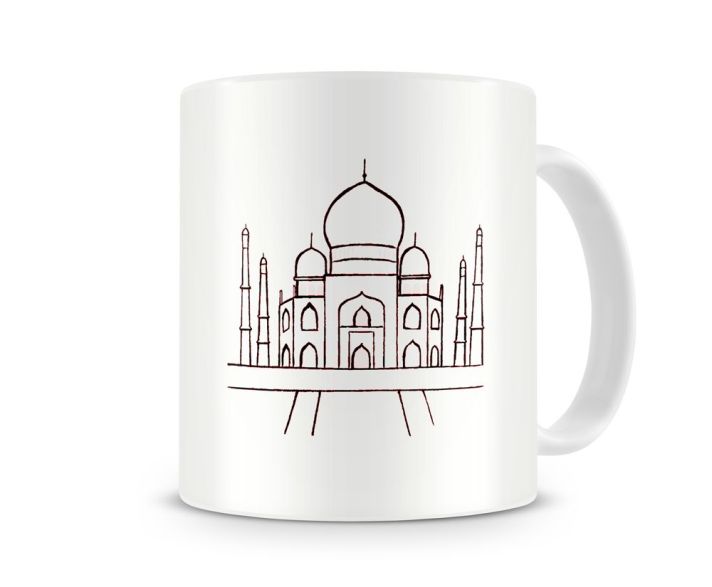
The Crown Palace, or as we more commonly know it, the Taj Mahal, is probably one of the most recognisable buildings in the world. It has even been called the eighth wonder of the world. Everyone knows that it is in India, and most people probably know that it was built as a tomb for a dead empress, but do they know the exact history behind this amazing building?
In 1612, the Muslim Mughal emperor, Shah Jahan, married for the second time. His bride was Arjumand Banu Begam, although she is better known by her other name, Mumtaz Mahal. Despite the traditions of the time, this wedding was a real love match, the pair having fallen in love at first sight five years earlier, when they were fifteen. Mumtaz became inseparable from her husband, accompanying him on all his journeys and military campaigns. She had fourteen children by him, although bearing her fourteenth child, a girl, led to her tragic death at the age of 39.
Jahan was so overcome with grief that his hair and beard turned white in a matter of months after her death. Before her death, she had made Jahan make four promises to her: build a monument in her name; remarry; love and cherish their children; and finally, visit the tomb once a year on the anniversary of her death. Jahan only managed to fulfil two of these promises. However, luckily for the rest of the world, the monument was one of them.
How could he afford to build such a magnificent monument? Well, luckily for Jahan, the Mughals were extremely rich and very powerful. When he inherited the throne from his father in 1627, he also inherited great wealth. He used this wealth to ensure the Taj Mahal became the most incredible building of its time. He chose a site along side the River Jumna at Agra, once the capital of the Mughal Empire in the sixteenth century. The white marble used in its construction was transported by one thousand elephants, from 200 miles away, and inset with turquoise, jade, sapphires and amethyst. There are inscriptions from the Koran all round the Taj Mahal. Twenty thousand workers and artisans were involved in the project, which started the year after her death, and took twenty-two years to fully complete, during which time Jahan did indeed find himself a new bride.
Rumour has it that Jahan planned to build a mirror version of the Taj Mahal, on the other side of the River Jumna, but this would be built from black marble. Foundations and outline for a garden have been discovered in that vicinity, but the events which followed put a stop to any such building. Some years after the completion of the Taj Mahal, Jahan fell ill. His four sons by Mumtaz Mahal, who he had long since fallen out with, then turned on each other. The ensuing conflict left all but one of them, Aurangzeb, dead. He then overthrew his father in about 1658, and placed him under house arrest in Fort Agra for the rest of his life, barring him from visiting the palace. However, it is believed that, from his prison room, Jahan could look out on his incredible creation. On his death, some eight years later, his body was rescued by his daughter and taken across the river to be laid next to his beloved wife.
It is an interesting story, but what is it about this tomb that makes people from all corners of the world and all religions want to visit it – to risk the three-hour stomach-in-mouth road trip from Delhi to Agra? Simply, it is a breathtakingly beautiful sight. Walking through the main gate, you suddenly see a white marble arch which frames the Taj, acting like a veil covering a woman’s face, slowly being lifted to reveal her true beauty. You can almost see visitors become awestruck as they view it for the first time. This is a strange occurrence in a time when we have seen most of the sights of the modern world in photographs and on television. It is rare for people to get a feeling of sheer amazement any more. However, this is exactly what you get when you see the Taj Mahal. Maybe it’s just the summer heat, as some cynics would have you believe!
If you stay there for any length of time, you will see the different colours of the Taj Mahal. For at different times of the day, the tomb seems to change colour. From the pink of the morning, to the creamy white of evening, and the golden hue when the moon glows on it, the colours are a marvel to behold. Hindu traditions say that these colour changes depict the different moods of a woman. It is difficult to say if that is true, but one thing that is certain, if a building can have a gender, then the Taj Mahal is certainly feminine.